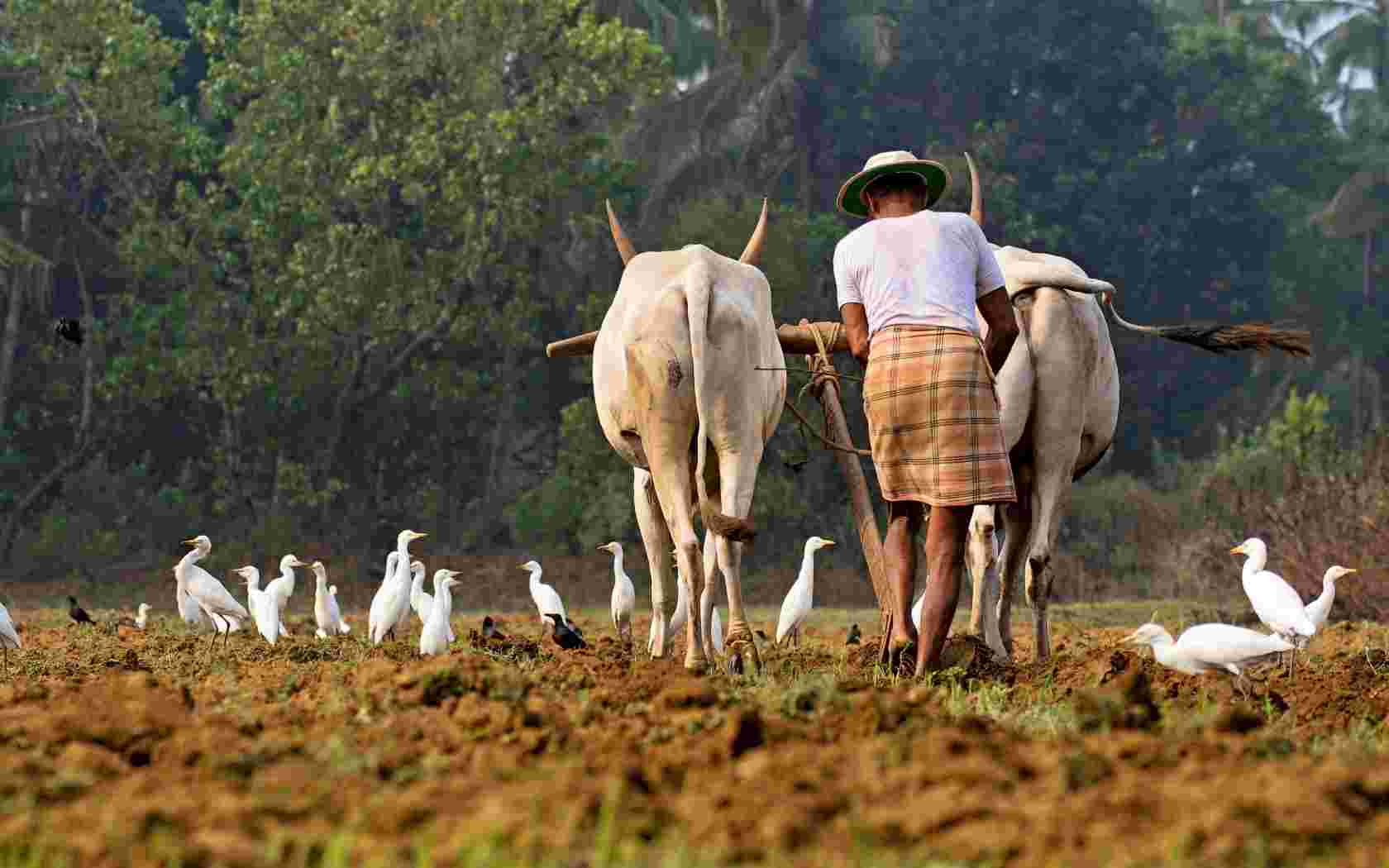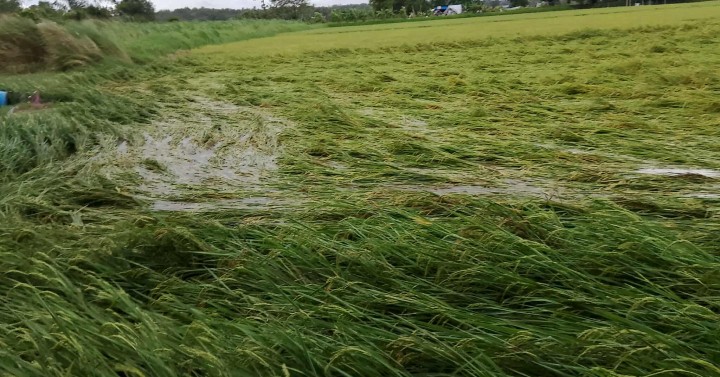As times evolve, a new system of lying has been invented. It is termed as a “White Lie” and it has been known to humans since the ages, however, it is only recently that these lies have proliferated into the media industry. If I tell you I killed a person but don’t tell you that I am a cop and the person killed was a terrorist, you will end up thinking I am a criminal. That’s how white lies and half-truths are spread to obfuscate and confuse the readers.
Something similar has been happening with Pradhan Mantri Fasal Bima Yojana (PMFBY) launched in 2016. Everybody is presenting facts based on fancy “RTI queries” but no one puts it in the right perspective.
Based on an RTI query,
The Hindu published an article claiming the number of farmers covered under PMFBY has dropped down by 84 lakhs between 2016-17 to 2017-18 while
The Wire has claimed that Rs 2829 crore dues haven’t been paid to the farmers in last two years 2016-17 and 2017-18. Only Kharif data available for 2017-18 which is 8.2% of the total estimated claims. Even though the figures of Rabi 2017-18 are not available according to the RTI reply reported by Wire, we will use the available data to disprove their hypothesis.
Let us deal with these issues one by one.
Why Farmers Quit PMFBY

As you can see, there is a drop of about 84 lakhs in the total farmers insured. But without looking at the macro picture, it is downright incorrect and disingenuous.
- Notice that it is loanee farmers who have reduced in a chunk while non-loanee farmers are constant.
- The drop is significantly noted in big states like Maharashtra, Uttar Pradesh and Karnataka who have announced huge farm loan waivers around 2017-18
- Any loanee farmer takes farm insurance as a surety that if his crop is damaged, he would at least pay off loans with the help of insurance he gets. Once the loans get waived by the State, farmers tend to exit from the PM Fasal Bima Yojana
- Bank Loans and Insurance are closely related. Banks make it mandatory for farmers to take up insurance policies so that if the farmer defaults, they can recover some loan amount from the farmers’ insurance premium. Insurance companies too find it suitable to sell policies from banks due to reduced marketing costs. Thus, loan waivers and insurance are closely related.
- The last factor is the good monsoon in 2017 that reduced uncertainties which resulted in the drop in the number of farmers insured.
If in spite of loan waivers by three big states, the farmers under PMFBY drop by mere 84 lakh out of whopping 5.72 crores, isn’t it an indicator that the scheme is still alive and kicking?
Pending Dues
The Wire claims there is a backlog of Rs 2,829 crores in the last two years in the settling of insurance claims. It says the total estimated claims were Rs 34,441 crores out of which Rs 31,612 crore are settled. Rest Rs 2,829 remain to be settled, which is 8.2% of the total estimated claims.
For comparison, let’s look at the two years before Fasal Bima was launched (2014-15 and 2015-16) and compare it with two years of Fasal Bima (2016-17 and 2017-18) and see the claims reported, claims settled and claims due. The figures are cumulative of Kharif and Rabi seasons.
Note- Before PMFBY was launched, there were three insurance schemes namely National Agriculture Insurance Scheme (NAIS), Modified National Agriculture Insurance Scheme (MNAIS) and Weather-based Crop Insurance Scheme (WBCIS)

(All figures from annexure of 2017
CAG report on crop insurance)
Thus, the pendency of dues was almost 45% in the pre-Fasal Bima days while the pendency has reduced to 8.2% in the two years of PM Fasal Bima, as noted before. Although claims are still being held up, the gap has reduced considerably.
If pendency actually reduced after PM Fasal Bima Yojana was launched, can one really claim PMFBY has benefitted insurance companies? The falsehood, other than The Wire, was also spread by Congress leader P Chidambaram.
To cut the long story short, PMFBY has been a definite improvement over the earlier insurance schemes. It has reduced the burden of a premium on the farmers to the level of 1.5% for Rabi crops, 2% for Kharif and 5% for horticultural crops.
There is no cap on government subsidy on premiums. It covers post-harvest losses too. The scheme aims at a long-term aim of full insurance coverage for farmers. Lots of improvement needs to be done. But judging it prematurely and based on white lies and half-baked narratives reeks of malicious intentions.
Source - https://www.opindia.com
 As you can see, there is a drop of about 84 lakhs in the total farmers insured. But without looking at the macro picture, it is downright incorrect and disingenuous.
As you can see, there is a drop of about 84 lakhs in the total farmers insured. But without looking at the macro picture, it is downright incorrect and disingenuous.
 (All figures from annexure of 2017 CAG report on crop insurance)
Thus, the pendency of dues was almost 45% in the pre-Fasal Bima days while the pendency has reduced to 8.2% in the two years of PM Fasal Bima, as noted before. Although claims are still being held up, the gap has reduced considerably.
If pendency actually reduced after PM Fasal Bima Yojana was launched, can one really claim PMFBY has benefitted insurance companies? The falsehood, other than The Wire, was also spread by Congress leader P Chidambaram.
To cut the long story short, PMFBY has been a definite improvement over the earlier insurance schemes. It has reduced the burden of a premium on the farmers to the level of 1.5% for Rabi crops, 2% for Kharif and 5% for horticultural crops.
There is no cap on government subsidy on premiums. It covers post-harvest losses too. The scheme aims at a long-term aim of full insurance coverage for farmers. Lots of improvement needs to be done. But judging it prematurely and based on white lies and half-baked narratives reeks of malicious intentions.
Source - https://www.opindia.com
(All figures from annexure of 2017 CAG report on crop insurance)
Thus, the pendency of dues was almost 45% in the pre-Fasal Bima days while the pendency has reduced to 8.2% in the two years of PM Fasal Bima, as noted before. Although claims are still being held up, the gap has reduced considerably.
If pendency actually reduced after PM Fasal Bima Yojana was launched, can one really claim PMFBY has benefitted insurance companies? The falsehood, other than The Wire, was also spread by Congress leader P Chidambaram.
To cut the long story short, PMFBY has been a definite improvement over the earlier insurance schemes. It has reduced the burden of a premium on the farmers to the level of 1.5% for Rabi crops, 2% for Kharif and 5% for horticultural crops.
There is no cap on government subsidy on premiums. It covers post-harvest losses too. The scheme aims at a long-term aim of full insurance coverage for farmers. Lots of improvement needs to be done. But judging it prematurely and based on white lies and half-baked narratives reeks of malicious intentions.
Source - https://www.opindia.com













